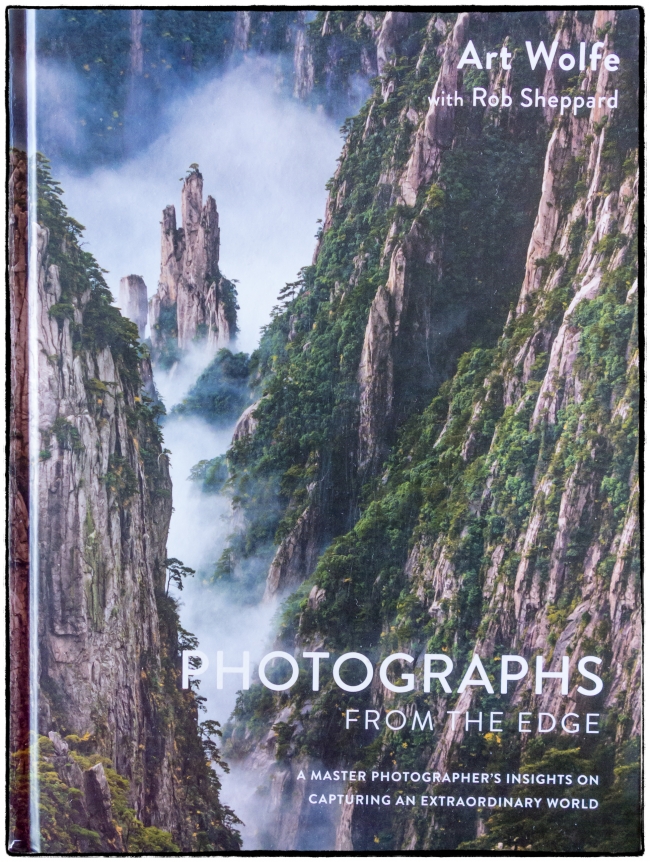I recently bought a copy of Photographs from the edge. A master photographer’s insights on capturing an extraordinary world by Art Wolfe (with Rob Sheppard).
The photographs are mostly along the lines of: animals in exotic locations; people in exotic locations; exotic locations all by themselves. In total there are about 130 color pictures (two pictures on the inside of the front and back covers are in black and white) spanning a period from the 1980s to the present. They’re striking pictures and well worth studying. However, they’re not really my cup of tea. While I can recognize the skill and ability required to produce such pictures they don’t move me all that much.
So why did I buy the book? Each picture is accompanied by technical information on the camera and lens used; settings chosen; and where appropriate the type of film used. In addition as Rob Sheppard says in his preface:
For each of Art’s photographs, we have included a section on the nature of the photograph, a short piece inspired by the subject matter of the image. To do each image justice, I often learned something new, especially about cultures and out-of-the-way places.
As a photographer, I enjoy learning how other photographers handle their way of seeing. Exploring another person’s approach to this art and craft can even illuminate your own pieces by way of both contrast and empathy with the work.
It’s this background to each picture, when read in conjunction with the pictures themselves, that I find appealing.
As an example I include below the full text relating to the picture on the book’s cover (see above).
October 2008
Huangshan
Anhui Province, China
Canon EOS-1Ds Mark III, EF70-200mm F2.8 lens +1.4x, f/14 for 1/13 sec., ISO 100I first visited Huangshan, or the Yellow Mountains of China, in 1984. I had been in the first Western expedition to Tibet and the slopes of Mount Everest. On our return, several of us stopped in eastern China to visit Huangshan. This is a sacred place for the Chinese people. In contrast to the grayness and the ice of Mount Everest, it is like being inside a giant sumi brush painting.
I had studied the sumi brush masters of both Japan and China during my college years in art history, and I remembered the imaginative landscapes of those artists. I long thought that they imagined those scenes, maybe from trips to the opium den! When I traveled to Huangshan, I discovered they were much more literal paintings than I had thought. There were indeed landscapes of vertical granite faces, contorted pine trees, and swirling mists.
Since that first visit, I have returned to the area on three distinct trips. Each time I renewed my fondness for this landscape and photographed new formations of the land. What I love about these shots is the scale. Pinnacles of rock rise out of the swirling mists, while tiny pine trees cling to the windswept slopes. The mist and the landscape formations provide a balance of positive and negative space, of light and dark areas.
The nature of the photos
Huangshan has long been a popular location for artists because of its spectacular mountains and cliffs. The pine trees growing on the rocks are endemic (exclusively native) to the area and so have gained the name “Huangshan pine”.
Photo Tip
Fog and changing weather can provide unique views of any landscape. Don’t be afraid of the clouds. Just avoid using large areas of blank clouds in your composition.

